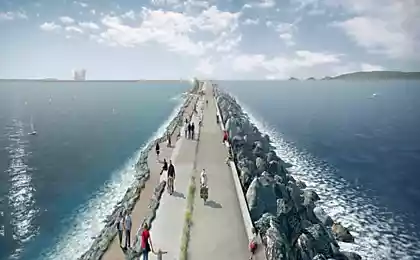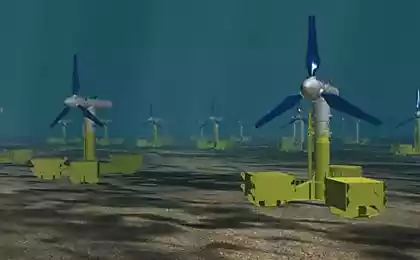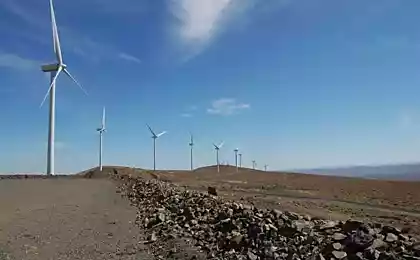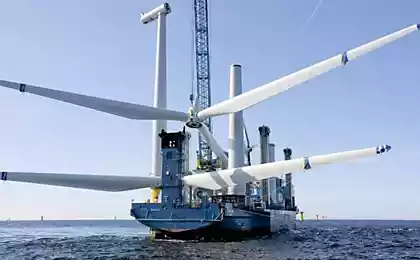471
Platform S40 Triton will be a new word in the tidal energy
Company Black Rock Tidal Power (BRTP), which is based in Nova Scotia and is engaged in the development of renewable energy, has signed a contract with Aecon. Under the agreement, BRTP will be required to make tidal платформуTriton S40, which in 2017 will set in the Bay of Fundy.
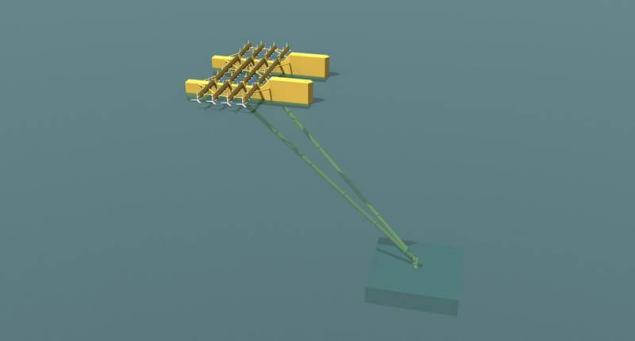
On this platform will be placed 40 undersea turbines SIT-250, is capable of producing a total of 2.5 MW of electricity, said informresurs Subsea World News. They are located on a free floating frame, which can sink and float, while being fixed ropes for the special anchor block on the bottom.
At the beginning of the tide, the platform is immersed in a vertical position and begins to generate electricity. Then, when the tide is turning, thanks to the frame opposite the flow turns 180 degrees and starts again.

"This innovative technology is at the forefront of progress in the field of renewable energy, says Nils Hersch, CEO of BRTP. — We are very happy to work together with Aecon and other companies in Nova Scotia because we will be able to demonstrate to the world the benefits of tidal power plants".
It is worth noting that in the world apply and other innovative development of marine power plants. For example, in Japan researchers are using underwater turbines successfully solve the problem of the use of oceanic currents.
This turbine resembles both a kite and land wind turbine. Design includes a float, a counterweight, a cabin for the generating units and three blades. With the armature stationary, the turbine is placed in the middle of sea currents. The pressure turns the blades, generating electricity.
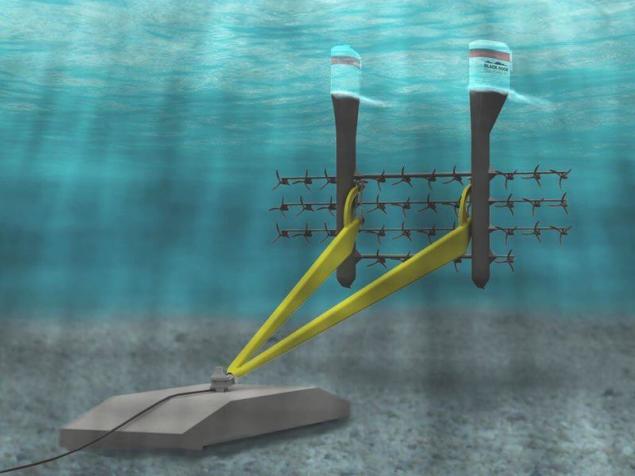
Test samples of new underwater turbines they spent in the ocean current Kuroshio current in the North Pacific ocean, near the East coast of Japan. The installation was loaded in the middle layer of the flow, which is at a depth of approximately 100 meters. Water there the current flow is stable and relatively calm even during strong storms and typhoons.
All ocean currents are relatively slow — their average speed is about 1-1,5 m/s. However, according to Japanese researchers, because the water is more than 800 times denser than air even a slow oceanic "river" can be compared in strength to hurricane-force winds. An additional advantage of this method of power generation that the course maintain direction and speed unchanged. published
P. S. And remember, only by changing their consumption — together we change the world! ©
Join us in Facebook , Vkontakte, Odnoklassniki
Source: teknoblog.ru/2016/05/20/60396

On this platform will be placed 40 undersea turbines SIT-250, is capable of producing a total of 2.5 MW of electricity, said informresurs Subsea World News. They are located on a free floating frame, which can sink and float, while being fixed ropes for the special anchor block on the bottom.
At the beginning of the tide, the platform is immersed in a vertical position and begins to generate electricity. Then, when the tide is turning, thanks to the frame opposite the flow turns 180 degrees and starts again.

"This innovative technology is at the forefront of progress in the field of renewable energy, says Nils Hersch, CEO of BRTP. — We are very happy to work together with Aecon and other companies in Nova Scotia because we will be able to demonstrate to the world the benefits of tidal power plants".
It is worth noting that in the world apply and other innovative development of marine power plants. For example, in Japan researchers are using underwater turbines successfully solve the problem of the use of oceanic currents.
This turbine resembles both a kite and land wind turbine. Design includes a float, a counterweight, a cabin for the generating units and three blades. With the armature stationary, the turbine is placed in the middle of sea currents. The pressure turns the blades, generating electricity.

Test samples of new underwater turbines they spent in the ocean current Kuroshio current in the North Pacific ocean, near the East coast of Japan. The installation was loaded in the middle layer of the flow, which is at a depth of approximately 100 meters. Water there the current flow is stable and relatively calm even during strong storms and typhoons.
All ocean currents are relatively slow — their average speed is about 1-1,5 m/s. However, according to Japanese researchers, because the water is more than 800 times denser than air even a slow oceanic "river" can be compared in strength to hurricane-force winds. An additional advantage of this method of power generation that the course maintain direction and speed unchanged. published
P. S. And remember, only by changing their consumption — together we change the world! ©
Join us in Facebook , Vkontakte, Odnoklassniki
Source: teknoblog.ru/2016/05/20/60396

